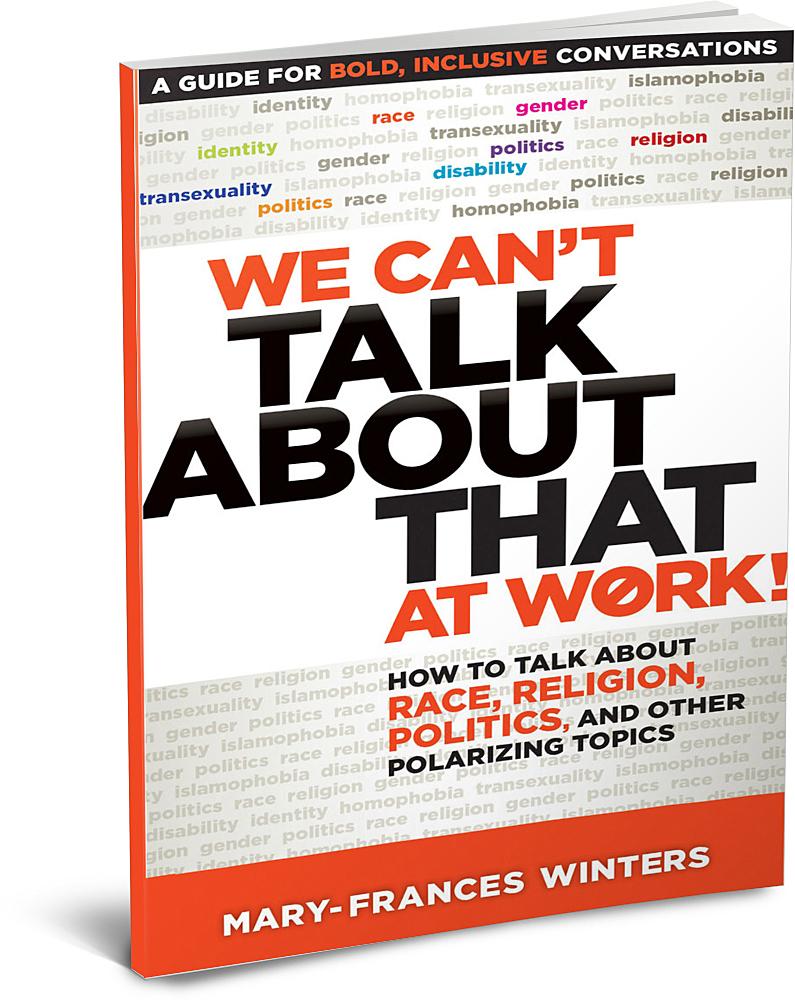
In this week’s installment of our “Engaging in Bold, Inclusive Conversations” feature series, we underscore the role of creating shared meaning. In her book, We Can’t Talk About That at Work!: How to Talk About Race, Religion, Politics and Other Polarizing Topics, Mary-Frances Winters
provides the following guidance for engaging in the conversation:
- Create a “brave zone” (permission to be courageous in saying things that might be uncomfortable)
- Agree on confidentiality parameters
- Listen to understand
- Expect non-closure
- Cut each other some slack
- Create shared meaning
While each one of these are critical to engaging in bold, inclusive conversations, ‘creating shared meaning,’ is oftentimes missed when in the heat of polarizing dialogue. When it comes to issues tied to our identity, we are more likely to be passionate, and unmoving in our beliefs. In the book, Winters references research conducted by social psychologists that suggests we retreat to “tribalism,” separatist thinking when our core belief systems are threatened. Reasoning and evidence simply do not matter.
That’s why convincing someone to “change what they believe” is difficult, and shouldn’t be the goal of engaging in these conversations; however, reaching a point of mutual understanding should. Creating shared meaning is a stepping stone to getting there.
The research around cultural competence supports this notion as well. When considering The Intercultural Development Continuum, for example, it is suggested that polarization be addressed by highlighting similarities, and ‘universal’ values. When one is at polarization, highlighting commonalities is less threatening, and is a strategic means towards fostering one’s capacity to begin to understand differences. Highlighting differences prematurely can be counterproductive, exacerbating “us and them,” sentiments. Such is also the case when engaging in bold, inclusive conversations.
Finding common ground and creating shared meaning is requisite to having the capacity to explore other differences. For example, in the book, Winters presents a scenario where a white male manager, Jake, discusses the recent racial injustices with his black male team member, Rodney. In this scenario, Jake doesn’t understand Rodney’s concerns or the impact of these injustices on his engagement and emotional health. In one of their second or third conversations, Winters recommends creating shared meaning before attempting to explore and resolve differences.
Creating shared meaning and finding common ground included statements like:
- “We all want to be safe.”
- “We all want to be able to trust those in charge of keeping us safe.”
- “Historically, African Americans have had very different experiences than white people, and there is a need to foster deeper understanding of these differences.”
- “African Americans have unspoken concerns about the killing of unarmed black men.”
- “These types of stresses can impact engagement and productivity.”
- “We don’t know what we don’t know, and we all have a lot to learn about each other to have effective dialogue.”
The process of getting to shared meaning should not be taken lightly. It may take several conversations and opportunities to learn and reflect to attain this goal. Please note that there are no set number of conversations to get to this point. It could take one or ten, for that matter. It depends on a number of different factors such as the topic, openness to accept each other’s perspective, the amount of new information that needs processing and understanding, etcetera. You will have to learn to be comfortable with non-closure. You may never get to closure because this is a process—a journey and not a destination.
(Excerpt: We Can’t Talk About That at Work! How to Talk About Race, Religion, Politics, and Other Polarizing Topics by Mary-Frances Winters)
We Can’t Talk About That at Work! is officially available for purchase! Purchase your copy or download an excerpt from the book.



















